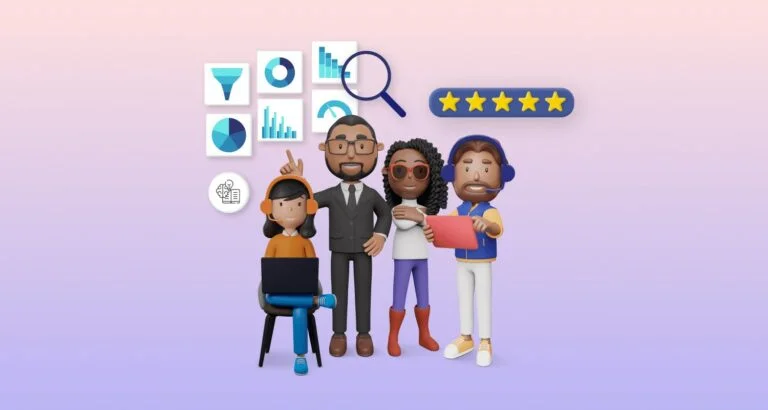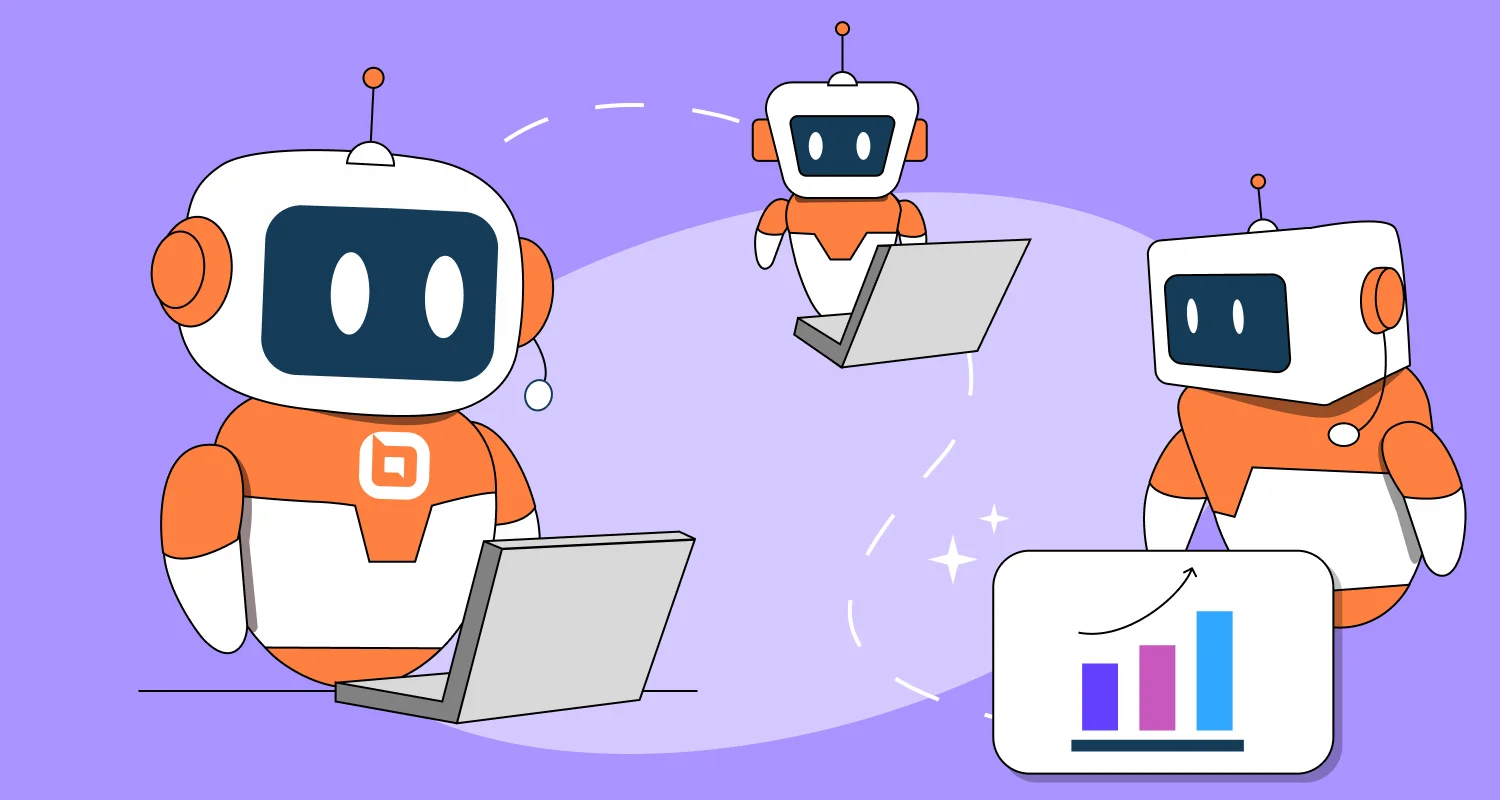In today’s data-driven world, understanding your customers isn’t just beneficial, it’s essential for businesses to thrive. While your competitors leverage sophisticated analytics to inform their decisions, can your business afford to rely on hunches?
Customer intelligence (CI) has emerged as the critical differentiator that empowers businesses to truly understand their customers’ needs and preferences. It transforms raw information into actionable insights that drive strategic decisions across marketing, product development, and customer service.
This article will dig into customer intelligence, its importance, the different types, and how to use it to drive your business forward.
What is customer intelligence?
Customer intelligence refers to collecting and analyzing information related to customer behavior, needs, and preferences to understand them better.
It involves collecting data from various sources, such as transaction records, social media interactions, and customer feedback.
This data is processed using analytical tools or customer intelligence platforms to provide actionable insights that form marketing strategies, product development, and customer service improvements.
Types of data used in customer intelligence platforms and use cases
Customer intelligence analyzes various data types that help businesses understand their customers better.
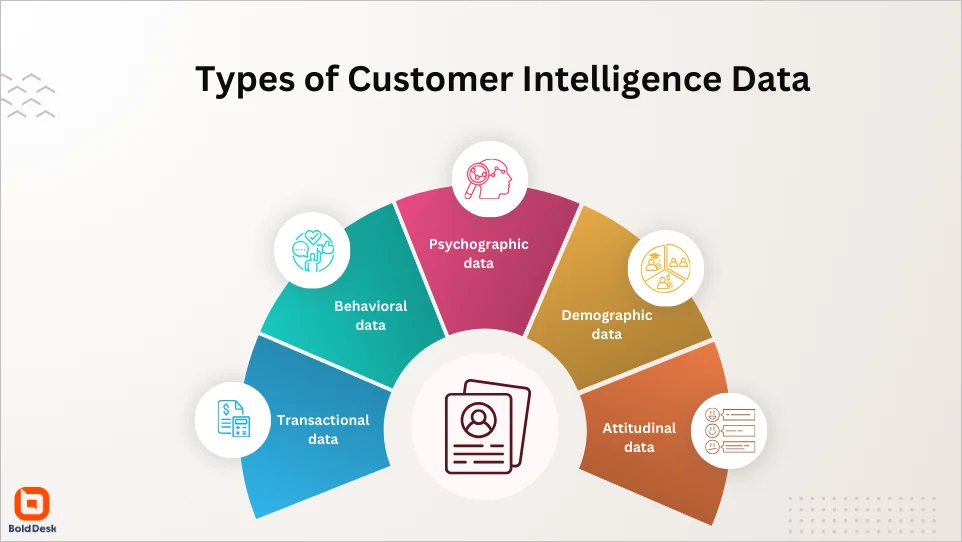
Below is a breakdown of each type along with strategies for using them effectively.
Transactional data
Transactional data is any information about the purchasing history of customers. This information includes:
- What they bought
- When they bought
- How much they spent
- Preferred payment methods
Use case: Use transactional data to create customer loyalty programs or offer tailored discounts. Companies can also predict future buying behavior based on past transactions.
Behavioral data
This data tells how customers interact with your products, services, and websites. These include:
- Purchasing patterns
- Browsing history
- Usage frequency
Use case: Implement personalized recommendations based on past behavior.
For example, an e-commerce site can suggest products like or related to those a customer has previously bought or viewed.
Psychographic data
Psychographic data provides insight into customers’ needs and preferences, which helps businesses create more targeted marketing strategies.
Some kinds of psychographic data include:
- Lifestyle
- Interests
- Values
- Attitudes
- Motivations
- Personality traits
Use case: Craft marketing campaigns that resonate with specific psychographic segments.
For instance, a company selling outdoor gear might target adventurous and nature-loving individuals by aligning its messaging with these values.
Demographic data
Demographic data is any information about the personal and essential characteristics of customers.
These characteristics include:
- Age
- Gender
- Income
- Education
- Marital status
- Occupation
- Location
Use case: Tailor marketing messages and product offerings based on demographic segments.
For instance, if a company sells skincare products, it might create different marketing campaigns targeting different age groups or genders.
Attitudinal data
Attitudinal data provides information about customers’ sentiments on the company, its brand, its products and services, and its support team.
Some kinds of attitudinal data include:
- Customers’ explicit opinions
- Customers’ perceptions about product or service quality
- Satisfaction levels
Use case: Gather feedback through surveys, reviews, or social media interactions to understand customer sentiment.
You can utilize this data to improve products and services or tailor customer support experiences to address expectations.
Why is customer data intelligence important?
To truly understand your customers, you need to bring together data from many different sources. That’s where customer intelligence (CI) comes in.
It’s a smart system that analyzes customer behavior and helps businesses offer better experiences across all platforms.
A strong CI tool gives useful suggestions for improving customer relationships. By combining data from various systems, it builds a detailed profile for each customer showing what influences their decisions and helping guide them toward the best next step.
Here are some of the key advantages of customer intelligence analytics:
- Increases customer loyalty: Customers are more likely to stick with a brand that understands their needs and consistently meets or exceeds their expectations. Personalization of experiences based on customer intelligence ensures customer satisfaction and enhances customer loyalty.
- Enhances customer experience: By understanding customer desires and behaviors from customer intelligence data, businesses can tailor their marketing, services, and interactions to meet customers’ individual preferences, leading to personalized and satisfying experiences.
- Ensures better customer service: Metrics of customer intelligence data help highlight common support issues and customer pain points, enabling support teams to plan faster and provide more effective resolutions. Analytics results also help form training and development programs for customer service representatives to improve their skills and knowledge.
- Facilitates informed decision-making: Insights derived from customer data empower companies to make well-informed choices regarding their marketing tactics, product innovation, and the distribution of resources.
- Allows you to understand customers better: Customer intelligence offers in-depth insight into customers’ interactions with a business, helping these businesses to know their clients better. This enables businesses to accurately forecast the motives driving their customers’ actions and purchasing decisions.
- Provides competitive advantage: By staying aware of market trends and consumer preferences, companies can anticipate changes in the industry and adapt their strategies more rapidly than competitors.
- Increases sales and revenue: Understanding and predicting their customer behaviour through insights enables businesses to upsell, cross-sell, and promote repeat purchases, increasing overall revenue.
How to collect customer intelligence data
The way you gather intelligence should align with your business type, industry standards, customer analytics tools, and the kind of insights you’re looking to uncover.
Whether you’re a brand seeking behavioral data or a company focused on client needs, the goal is the same: to understand your customers more deeply and use that knowledge to make smarter decisions.
Below are some effective and widely used methods:
Surveys and questionnaires
Surveys are one of the most direct and cost-effective ways to gather customer insights. You can:
- Craft concise questions to extract specific feedback, preferences, and opinions, and ensure an efficient and user-friendly experience.
- Implement feedback forms strategically at various touchpoints, such as post-purchase, on your company website.
It is essential to keep questionnaires focused and to use a mix of questions that combine multiple choices, rating scales, and are open-ended, to capture both measurable data and personal opinions.
Collecting feedback in real-time, right when the experience is fresh, helps you identify issues early and make timely adjustments that help improve the customer experience.
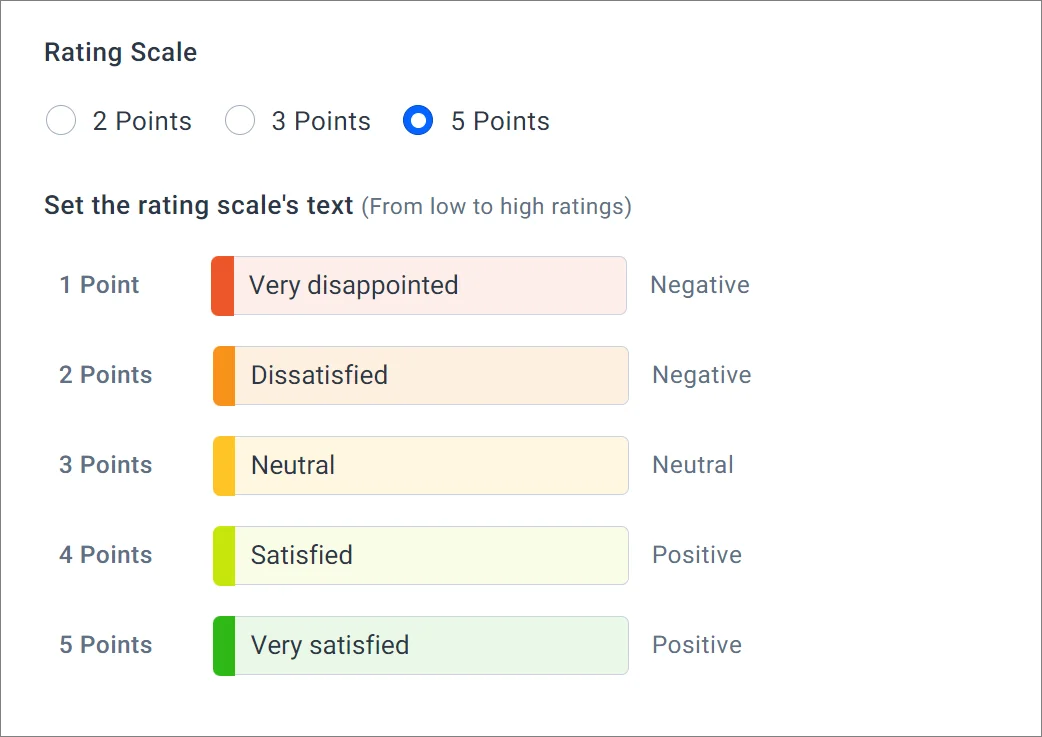
Social media listening
Leverage social media customer service platforms to track and analyze customer sentiments, comments, and discussions.
By monitoring conversations, comments, and mentions across platforms, you can better understand how customers perceive your brand and what they expect.
Use social listening tools to:
- Track brand mentions and hashtags
- Analyze customer sentiment and emerging trends
- Identify pain points or product opportunities
- Respond quickly to feedback—both positive and negative
Actively listening on social media not only helps you stay in tune with your audience but also shows customers that their voices are heard and valued.
Customer interaction history
Your support team’s records of customer interactions are a goldmine of customer insight.
By conducting customer experience analytics, reviewing past conversations, whether through email, chat, phone, or social media, you can uncover recurring questions, common pain points, and patterns in customer behavior.
Use this data to:
- Identify frequently asked questions and update your knowledge base
- Spot recurring issues that need fixing or clarification
- Conduct customer journey mapping
- Improve training for support agents
- Personalize future interactions based on past concerns
- Perform customer behaviour analysis
Analyzing interaction history not only helps resolve current problems more efficiently but also empowers you to proactively improve the overall customer experience and enhance customer satisfaction.
Online reviews and ratings monitoring
You can also collect customer intelligence data by monitoring and analyzing online reviews and ratings on your company websites, industry review sites such as G2, and community forums.
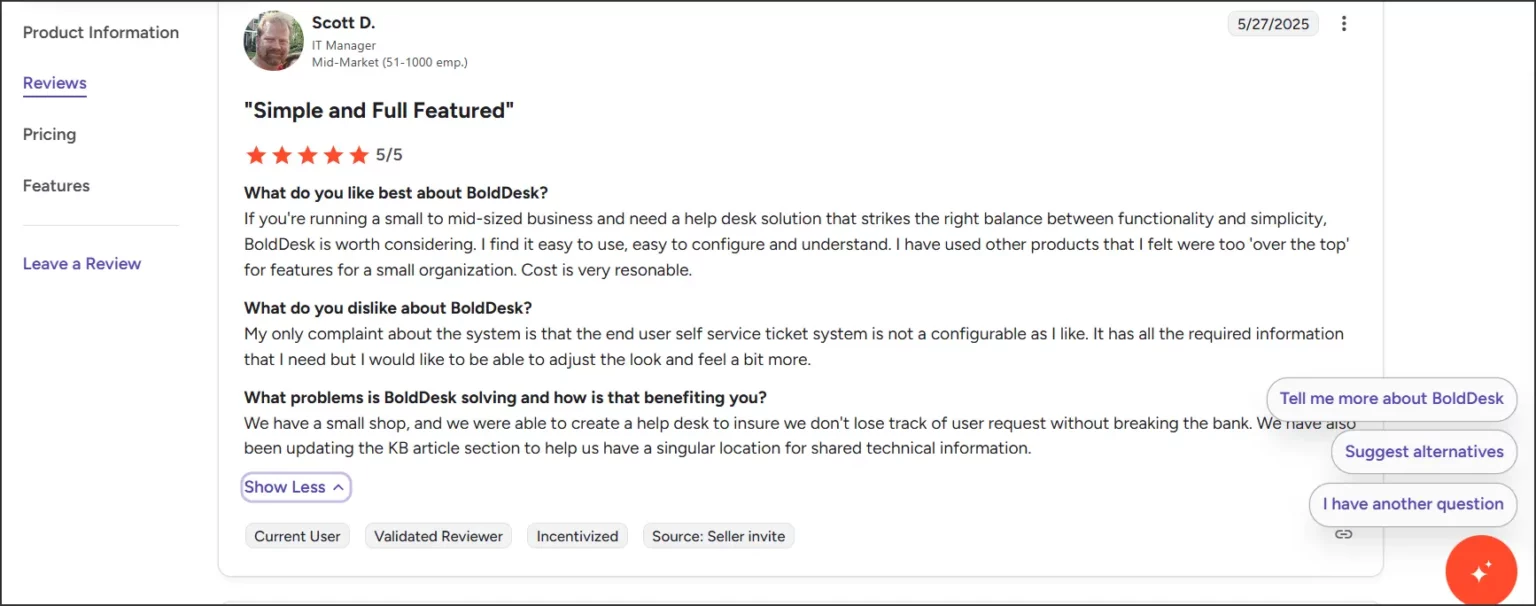
Use customer feedback to identify strengths and weaknesses, address concerns, and showcase positive experiences.
Loyalty programs and data analysis
Loyalty programs offer more than just rewards, they provide valuable insight into customer behavior.
Analyzing data such as repeat purchases, reward redemptions, and engagement trends, can help you better understand what drives customer retention and brand loyalty.
48% of consumers mentioned joining a brand’s loyalty program to express their devotion to a brand or company. (Statista)
Use this data to:
- Identify your most loyal customers and what keeps them coming back
- Spot disengaged members and re-engage them with targeted offers
- Optimize your rewards structure to increase participation and satisfaction
- Measure the true impact of your loyalty program on customer lifetime value
How to use customer intelligence analytics
Businesses can use customer intelligence analytics to gain a deeper understanding of their customer base and tailor their products to them.
Here are several ways that businesses can utilize customer intelligence analytics to drive success.
Delve into customer intelligence data to categorize your audience based on their actions, preferences, and demographic details.
By doing so, you can customize marketing initiatives and create personalized interactions, leading to heightened satisfaction and more active engagement among customers.
Employ predictive analytics to forecast customers’ future actions and preferences. This forward-looking approach aids in:
- Identifying upcoming trends
- Pinpointing customer requirements
- Spotting potential attrition
- Enabling preventative actions to be taken
Gain insight into customers’ likes and dislikes by examining their feedback and how different customers interact with the brands.
These valuable revelations about customers’ preferences can help you improve your products and services to match customers’ expectations.
Evaluate the effectiveness of your marketing tactics across various platforms.
Pinpoint the mediums or campaigns that deliver the highest customer service return on investment and refine your marketing strategies to enhance efficiency and reduce expenditure.
Customer data intelligence best practices
To truly benefit from customer intelligence, businesses need more than just data, they need the right strategies to turn insights into action.
To get the most value from customer data, businesses across industries can follow these proven best practices to turn insights into meaningful action.
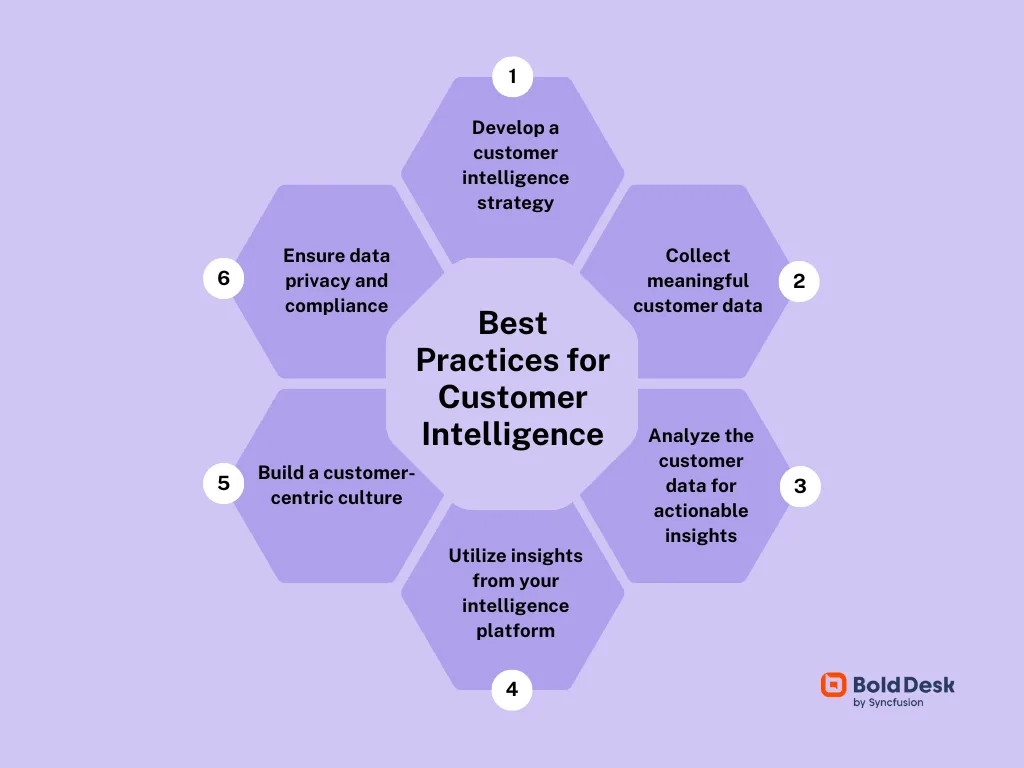
Develop a comprehensive customer intelligence strategy
Develop a comprehensive plan that outlines how you’ll collect customer data from multiple sources, which tools and techniques you’ll use to analyze it, and how often you’ll review and act on the insights.
By having a complete strategy for collecting, analyzing, and utilizing customer intelligence data, you can aid its adoption and benefits to your company.
Collect meaningful customer data
To truly understand your customers, gather data from a variety of touchpoints and customer data platforms (CDP) that reveal client behaviors, preferences, and needs. Valuable sources include:
- Customer service interactions
- Feedback from surveys and questionnaires
- Social media activity and sentiment
- Purchase history and website behavior
It’s not just about collecting data, it’s about collecting the right data using customer segmentation strategies and utilizing it well.
Make sure your practices respect customer privacy and align with data protection regulations, building trust while driving smarter decisions.
Analyze customer intelligence data for actionable insights
Carefully analyzing customer intelligence data allows you to uncover meaningful patterns in behavior, preferences, and needs.
These insights enable you to create more personalized experiences, optimize decision-making, and design strategies that truly resonate with your audience, ultimately boosting customer satisfaction and driving business growth.
Utilize insights from your customer intelligence platform
Provide your organization with useful conclusions after the analysis stage.
Reports and analytics facilitate the revelation and exchange of customer intelligence insights.
To inform future marketing and customer care initiatives, analytics findings should be discussed and solutions both implemented and tracked to test their efficacy.
Build a customer-centric culture
Make sure your team always has the consumers at the center of everything they do.
This involves prioritizing the needs and preferences of the consumers or at least knowing how to make them feel you do.
Businesses with happy customers yield greater profitability, attract more consumers, and improve customer satisfaction.
For this reason, before executing actions that may affect customer experience, firms should evaluate customer intelligence.
Ensure data privacy and compliance
Customers have very high expectations when it comes to how you secure their data. Prioritize ethical use of consumer information by following data protection standards and respecting customer privacy.
This is crucial for preserving your reputation and building trust with clients. Mishandling data can harm your business on many fronts.
Embrace customer intelligence as the cornerstone of your strategy
In today’s competitive landscape, the most successful companies share a common approach to customer intelligence.
Organizations that excel at collecting, analyzing, and acting on customer insights consistently outperform those that don’t. Customer intelligence has evolved from a nice-to-have to a fundamental business necessity.
Ready to take your customer intelligence to the next level? Organize a live demo to experience how BoldDesk can help your company enhance its customer intelligence capabilities.
Start a free trial to experience its many capabilities. If you have any questions, feel free to contact the BoldDesk support team.
Did you find this article to be useful? Please feel free to leave comments in the space provided below with your thoughts and recommendations.
Related articles
- Customer Satisfaction Survey Questions in Customer Service
- Ways to Build and Organize Customer Support Team
- 6 Easy Steps to Implement Customer Journey Analytics
Frequently Asked Questions
Customer intelligence leverages data from feedback, reviews, and usage patterns to provide actionable insights into customer behavior and expectations.
By analyzing this information, businesses can identify recurring issues, uncover unmet needs, and make informed decisions about which features to enhance or develop next.
Customer Intelligence (CI) focuses solely on customer-related data such as behavior, preferences, demographics, feedback, and interactions, to improve customer experience and loyalty.
Business Intelligence (BI) is broader and encompasses all types of business data, including sales, finance, operations, and market trends, to enhance overall organizational strategy and performance.
Customer Experience Intelligence (CXI) is the process of collecting and analyzing data related to customers’ emotions, behaviors, and satisfaction at every touchpoint in their journey.
CXI helps brands improve the overall customer experience through actionable insights derived from sentiment analysis, feedback, and journey mapping.
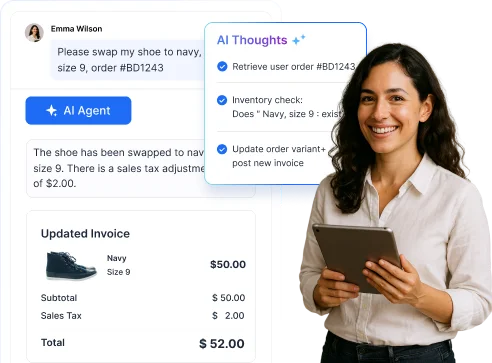


















 Email Ticketing System
Email Ticketing System Shared Inbox Software
Shared Inbox Software Multi Brand Help Desk
Multi Brand Help Desk Internal Help Desk Software
Internal Help Desk Software Trouble Ticketing Software
Trouble Ticketing Software Mobile Help Desk
Mobile Help Desk 









